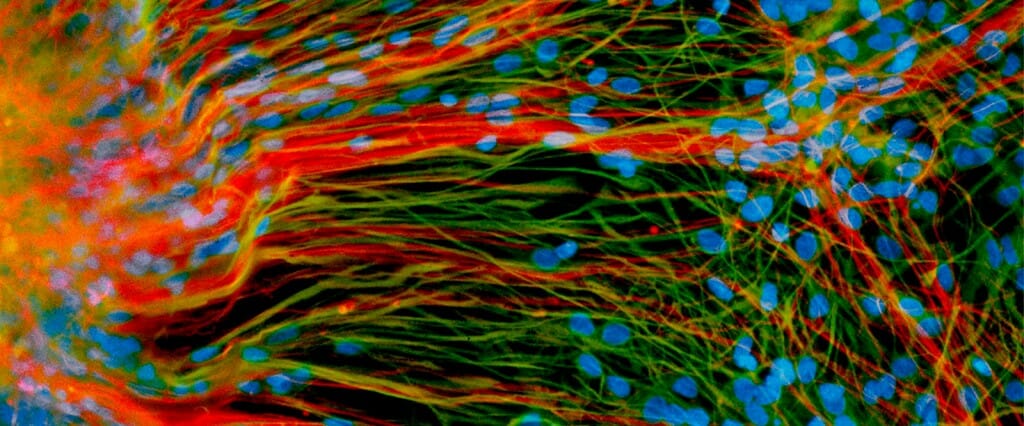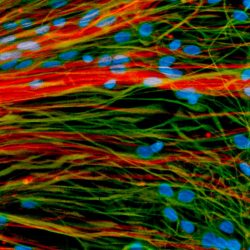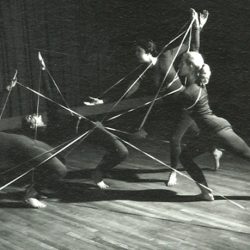Stem Cell Story Line
James Thomson’s discoveries inspired scientists around the world.
For the last quarter century, UW–Madison has been among the global leaders in stem cell science, and that status is largely due to cell biologist James Thomson. Thomson made waves at the end of the 20th century when he isolated embryonic stem cells, opening new avenues of research and inspiring the imagination of scientists around the globe. In July, Thomson will retire from the UW, where he leaves behind a legacy of discovery.
1981
- Earns his bachelor’s from the University of Illinois–Urbana-Champaign (nobody’s perfect)
1985
- Earns his VMD from the University of Pennsylvania
1988
- Earns his doctorate in molecular biology from Penn; his dissertation is titled “The Developmental Potential of Androgenones, Gynogenones, and Parthenogenones”
1991
- Begins residency in veterinary pathology at UW–Madison
1995
- Joins staff at the UW’s Primate Research Center; publishes “Isolation of a Primate Embryonic Stem Cell Line” in Proceedings of the National Academy of Science
1998
- Publishes “Embryonic Stem Cell Lines Derived from Human Blastocytes” in the journal Science; in this research, Thomson becomes the first person to successfully culture human embryonic stem cells
- WARF patents Thomson’s discovery on December 1
- WiCell is established, home to the Wisconsin International Stem Cell Bank
1999
- Science names Thomson’s stem cell research the Scientific Breakthrough of the Year
- The American Academy of Achievement gives Thomson its Golden Plate Award
2001
- On August 9, President George W. Bush delivers a speech that allows federal funding for embryonic stem cell research, but only in 60 stem cell lines.
- Time magazine puts Thomson on the cover of its August 20 issue, naming him in an article titled “America’s Best in Science and Medicine”
2002
- Thomson receives the World Technology Award
2004
- The UW announces that the Morgridge Institute for Research will open on campus; in 2008, Thomson is named the first member of the institute’s scientific leadership team and director of the Regenerative Biology Theme
2007
- Both Thomson’s lab and a lab at Kyoto University, headed by Shinya Yamanaka, announce the development of induced pluripotent stem cells — stem cells not obtained from embryos
2009
- President Barack Obama lifts restrictions on federal funding for stem cell research
2011
- With Yamanaka, receives the King Faisal Prize for medicine and, with Yamanaka and Elaine Fuchs, the Albany Medical Center Prize
2022
- Thomson gives a valedictory address to the campus community and retires
Published in the Winter 2018 issue




Comments
No comments posted yet.